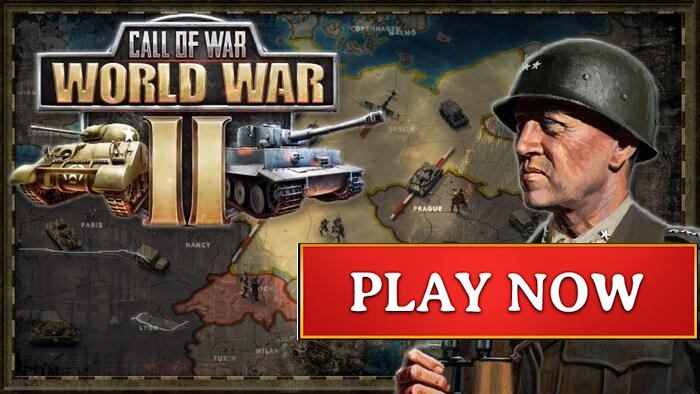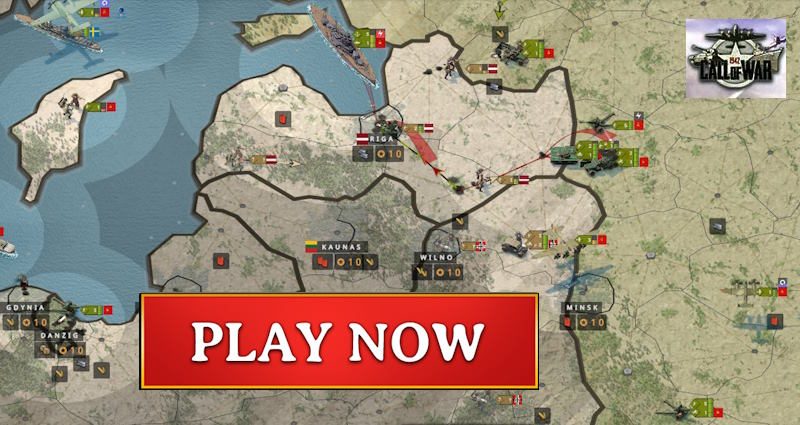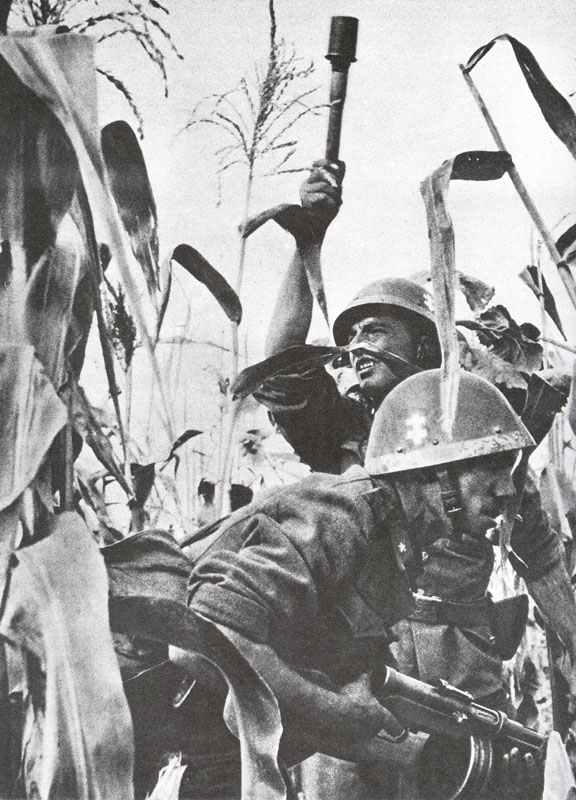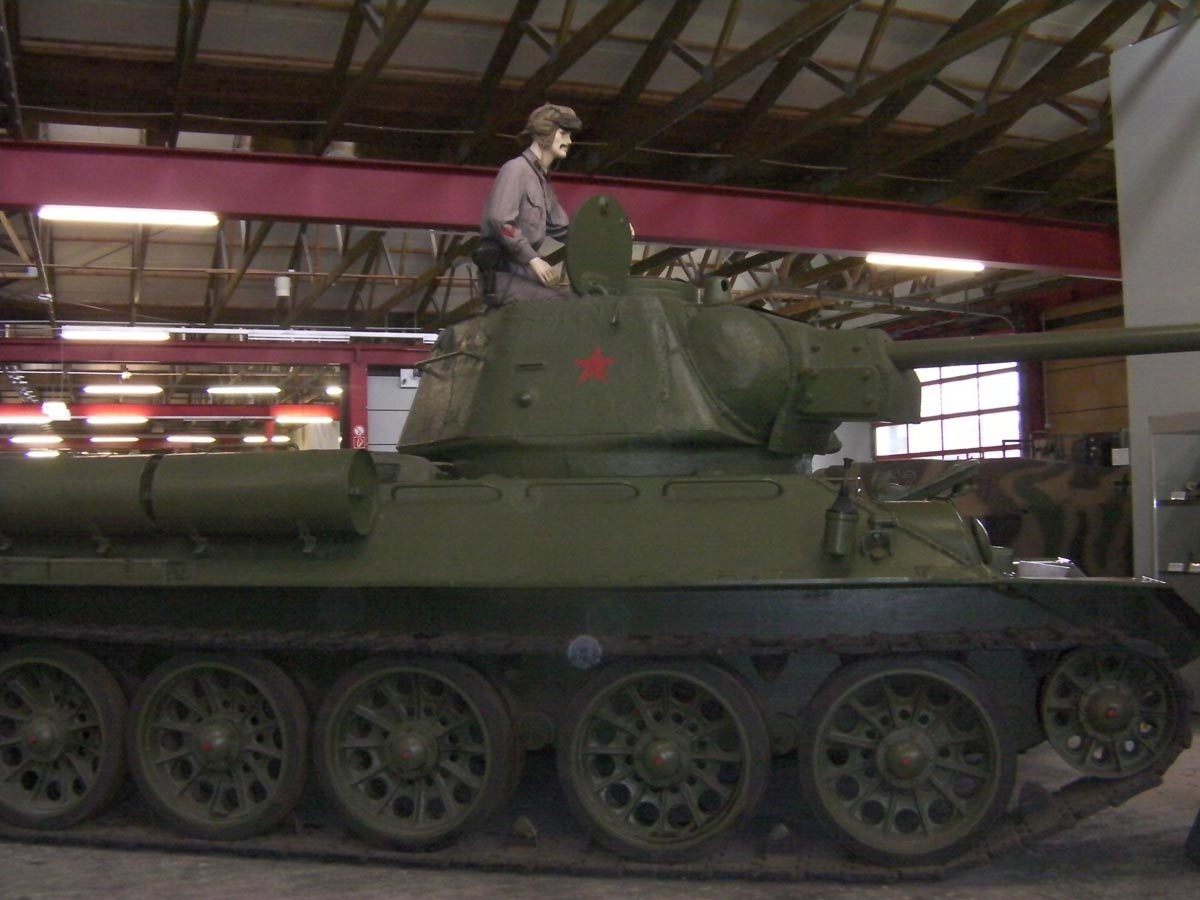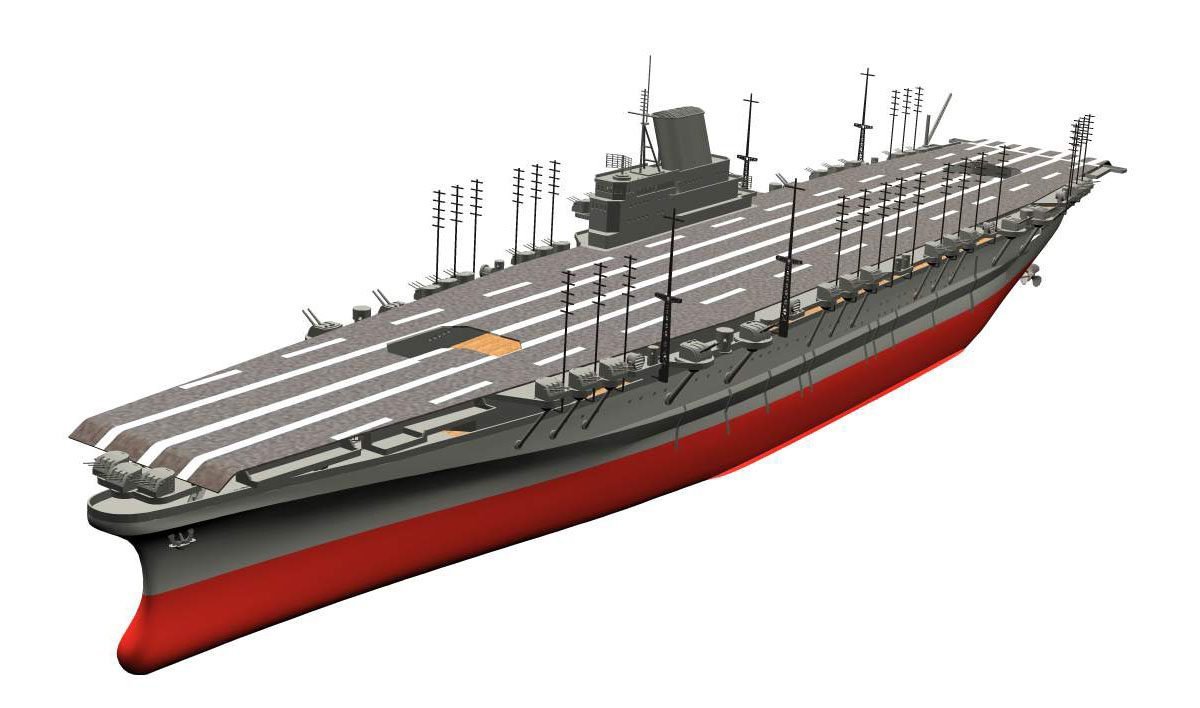Orders of Battle, strength of the Army divisions and tank inventory of the Wehrmacht at time of campaign in Poland.
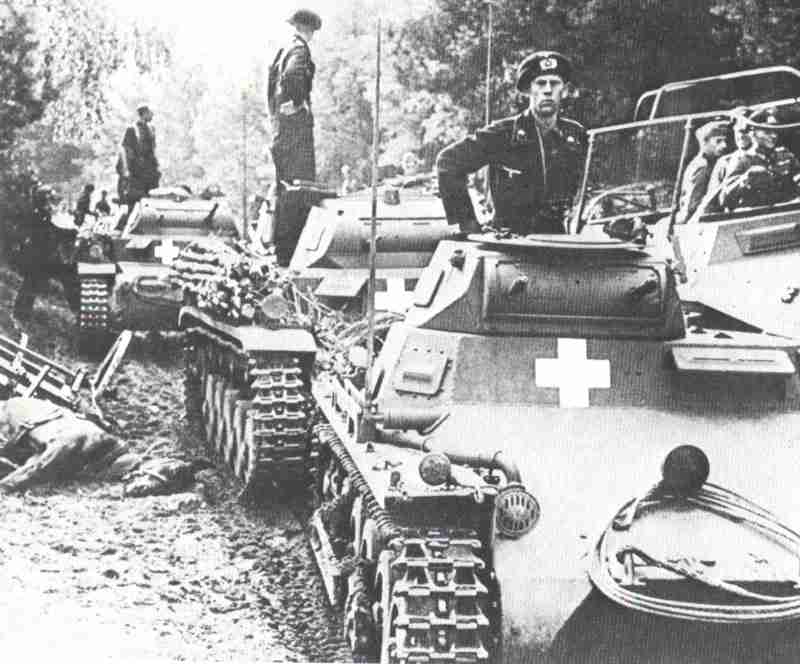
The Polish campaign of 1939
Table of Contents
The Polish campaign of 1939, also known as the Invasion of Poland, marked the beginning of World War II). On September 1, 1939, Nazi Germany invaded Poland, launching a campaign that would last until October 5, 1939.
This invasion was characterized by the German military’s use of blitzkrieg tactics, which involved rapid, overwhelming force using a combination of armored vehicles, motorized infantry, and air support. The German forces quickly overwhelmed the Polish defenses, despite brave resistance from Polish troops.
The invasion was not just a military operation, but also part of Hitler’s broader ideological goals. He considered the Polish people inferior and sought to create more living space (Lebensraum) for Germans in the east.
In response to the German aggression, Great Britain and France declared war on Germany on September 3, 1939, fulfilling their commitment to Poland and officially beginning World War II in Europe.
The Polish campaign is significant not only as the opening act of World War II but also as a part of the long Polish struggle for freedom. It demonstrated the effectiveness of the German blitzkrieg tactics and highlighted the unpreparedness of the Western powers to respond quickly to such aggression.
German Orders of Battle for the Polish campaign
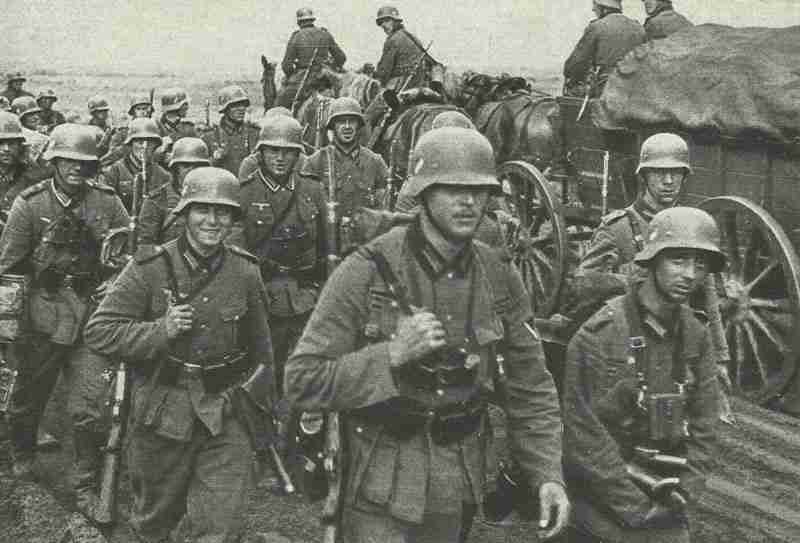
The German Orders of Battle at the time of the campaign in Poland and the resulting outbreak of World War 2.
In 1939 Germany was divided into 13 geographical districts known as ‘Wehrkreise’, each of which was a depot for a number of divisions and formed a ‘home-base’ for their regiments. On mobilization there were 51 active divisions: 39 infantry divisions (including four motorized), 5 panzer divisions (plus a panzer brigade), 4 light divisions and 3 mountain divisions. When Germany mobilized, the system was rapidly expanded to include 16 reserve, 21 territorial (Landwehr) and 14 training divisions (Ergänzungsdivisionen).
For the Polish Campaign the OKW created two army groups (deployment see map further down): Army Group North (divided into two armies each of three corps) consisted of one panzer division, one mixed Army/SS panzer division, two motorized divisions, 16 infantry divisions and a cavalry brigade. Army Group South (10 corps in three armies) consisted of four panzer divisions, four light, 21 infantry and three mountain divisions. Two of XVII Army Corp’s infantry divisions were Slovak, while attached to XIII Army Corps was the motorized SS infantry regiment Leibstandarte (Bodyguard Regiment) Adolf Hitler.
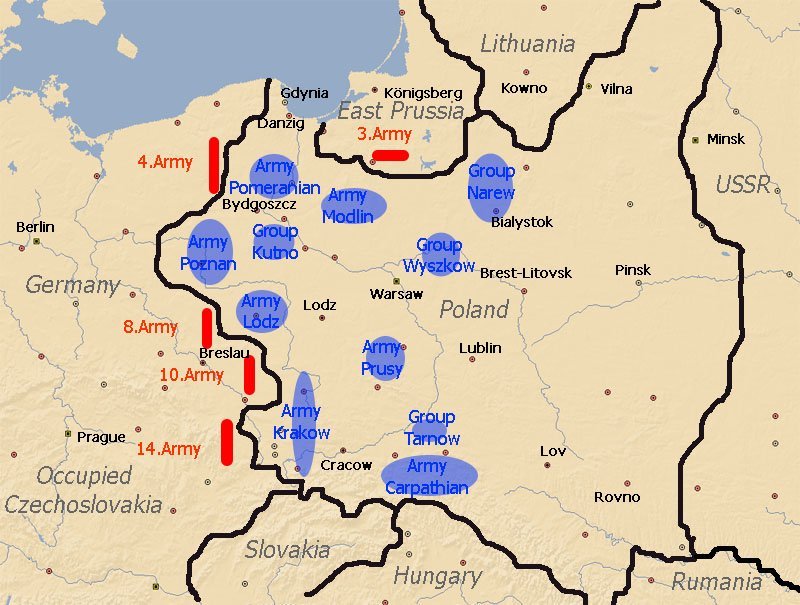
Schematic layout of the German Wehrmacht from September 1, 1939:
Army Group | Army | Corps | Divisions |
|---|---|---|---|
Army Group South (v.Rundstedt) in Silesia, Czech and Slovakia | 14 Army (List) in Czech and Slovakia | VIII, XVII, XVIII, XXIII Corps, Border Guard Command 3 | 2, 5 Panzer |
4 Light |
|||
7, 8, 28, 44, 45, 239 Infantry |
|||
1, 2, 3 Mountain |
|||
Border Guard unit 30 |
|||
10 Army (v.Reichenau) in Lower Silesia | XIV, XV, XVI Panzer-Corps, IV, VII XI Corps | 1, 4 Panzer |
|
1, 2, 3 Light |
|||
13, 29 motorised Infantry |
|||
4, 14, 18, 19, 27, 31, 46, 62, 68, 213, 221 Infantry |
|||
8 Army (Blaskowitz) in Upper Silesia | X, XIII Corps, Border Guard Commands 13, 14 | 10, 17, 24, 30 Infantry |
|
Army Group North (v.Bock) in Pommerania and East Prussia | 4 Army (v.Kluge) in Pommerania | XIX Panzer-Corps, II, III Corps, Border Guard Commands 1, 2, 12 | 3, 10 Panzer |
2, 20 motorised Infantry |
|||
3, 23, 32, 50, 73, 207, 208, 218 Infantry |
|||
3 Army (v.Küchler) in East Prussia | I, XXI Corps, Gen.-Com. Wodrig, Fortress-Com. Königsberg and Lötzen, Army Group Danzig and Group 15 | Panzer Unit East Prussia (4 Panzer Brigade) |
|
1 Cavalry Brigade |
|||
1, 11, 12, 21, 61, 206, 217, 228 Infantry |
|||
Army Group C (v.Leeb) in West Germany (Reserves: 22, 87, 209, 216, 223, 225, 251, 253, 254 Infantry) | 5 Army | VI Corps, General Com. Eifel | 16, 26, 69, 86, 211, 227 Infantry, Forttress troops Aachen, Border Guard troops Trier |
1 Army | IX, XII Corps, General-Com. Saarpfalz | 6, 9, 15, 25, 33, 34, 36, 52, 71, 79, 214, 231, 246 Infantry, Combat group St Wendel |
|
7 Army | Border Guard Com. Oberrhein | 5, 35, 78, 212, 215 Infantry, 14 Landwehr (Homeguard) |
|
Reserves subordinated to OKW | 56, 57, 58, 75, 76, 252, 257, 258, 260, 262, 263, 267 Infantry |
||
Reserve Army and Commander of the Army Armament | 4 Infantry divisions in preparation |
Approximate organization strength of the major types of the German Army divisions in 1939:
Infantry Division | motorized Infantry Division (1939) | Mountain Division | Panzer Division (1939-40) | Light Division |
|
|---|---|---|---|---|---|
Units total | 87 | 4 | 3 | 5 | 4 |
Officers | 500 | = | ? | 400 | 400 |
Officials | 100 | = | ? | 100 | 100 |
NCOs | 2,500 | = | ? | 2,000 | 1,600 |
Privates | 13,400 | = | ? | 9,300 | 8,700 |
Total men | 16,500-17,200 (35 divisions of 1st wave 18,000 | 16,500 | 13,056 | 11,800 | 10,800 |
Infantry Regiments | 3 with 3,000 men each | = | 2 with 3,000 men each | 2 with 3,000 men each | 1 or 2 with 2,000 or 3,000 men each |
Machine guns MG34 | 643 (116 heavy) | = | 569 | 220 | 460 |
Anti-tank rifles | 90 | = | - | ||
Mortars | 142 (84 x 5cm, 58 x 8.1cm) | = | 118 (60 x 8.1cm, 58 x 5cm) | 50 | 60 |
Infantry guns | 24 (6 x 15cm, 18 x 7.5cm) | = | 4 (15cm) | 10 | 10 |
Anti-tank guns | 75 (3.7cm Pak 36) | = | 51 (45 x 3.7 cm, 6 x 4.7cm) | 50 | 50 |
Howitzers and guns | 48 (8 x 15cm, 36 x 10.5cm leFH, 4 x 10.5cm guns) | = | 36 (8 x 15cm, 12 x 10.5cm, 16 x 7.5cm) | 28 | 24 (10.5cm leFH) |
Anti-aircraft guns (2cm) | 11 | = | 12 | 12 | 12 |
Armored Cars | 3 | 30 | - | 100 | 100 |
Tanks | - | - | - | 324 | 86 |
Trucks | 500 | 1,700 | - | 1,400 | 1,400 |
Cars | 400 | 1,000 | - | 560 | 600 |
Motorcycles | 452 | 1,300 | - | 1,300 | 1,100 |
Sidecars | 200 | 600 | - | 700 | 600 |
Horses | 5,375 | - | ? | - | - |
Horse-drawn carriages | 1,133 | - | ? | - | - |
Inventory of armored fighting vehicles on September 1, 1939:
Armored fighting vehicles | Inventory |
|---|---|
Panzer I | 1,445 |
1,223 |
|
Panzer II(flamethrower) | 3 |
98 |
|
211 |
|
Armoured Command Vehicles | 215 |
Assault gun StuG III | 5 |
Panzer 35(t) | 219 |
59 |
|
TOTAL | 3,478 |
German Forces total:
3,706,104 men (103 divisions), 3,478 tanks, over 7,000 guns
4,093 planes (inc. 1,176 bombers, 1,179 fighters, 335 dive-bombers)
2 old battleships, 2 battlecruisers, 3 pocket battleships, 8 cruisers, 22 destroyers, 56 submarines
See also: Germany Army Unit Organization 1939-41.
References and literature
World War II – A Statistical Survey (John Ellis)
Krieg der Panzer (Piekalkiewicz)
Luftkrieg (Piekalkiewicz)
The Armed Forces of World War II (Andrew Mollo)
A World at Arms – A Global History of World War II (Gerhard L. Weinberg)
Der 2. Weltkrieg (C. Bertelsmann Verlag)
Illustrierte Geschichte des Dritte Reiches (Kurt Zentner)
Unser Jahrhundert im Bild (Bertelsmann Lesering)
1939 – Der Krieg, der viele Väter hatte (Gerd Schultze-Rhonhof)
Zweiter Weltkrieg in Bildern (Mathias Färber)
Der Grosse Atlas zum II. Weltkrieg (Peter Young)
Kraftfahrzeuge und Panzer der Reichswehr, Wehrmacht und Bundeswehr (Werner Oswald)


